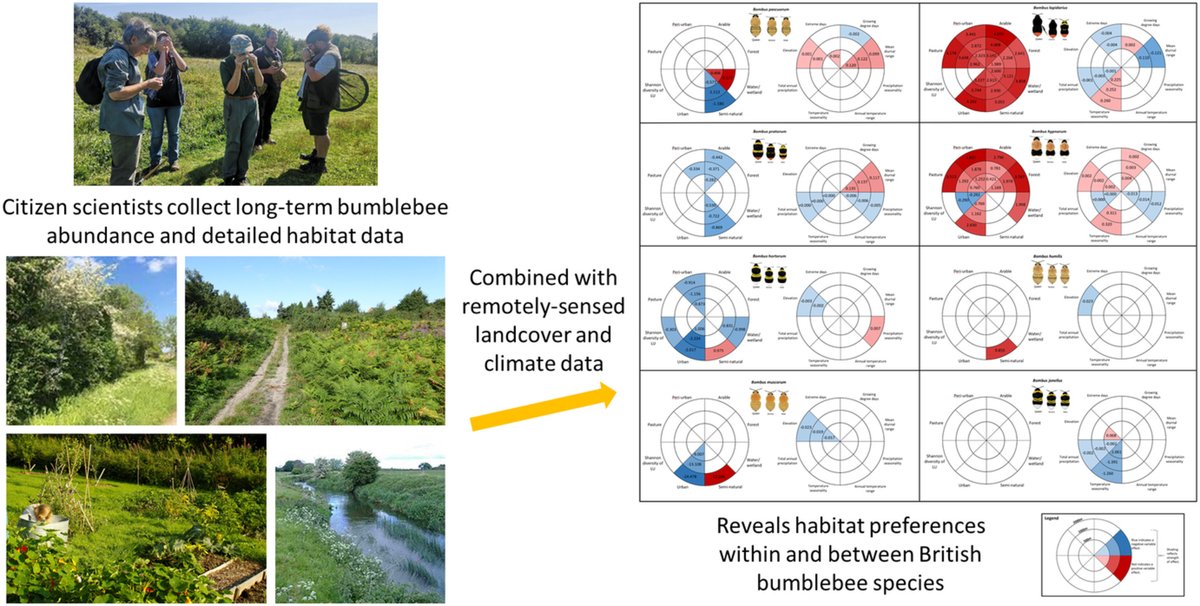
Findings from a decade of citizen-science observations
New paper led by our group member Penelope Whitehorn about the effects of climate and land use on British bumblebees is out in Journal of Applied Ecology (https://doi.org/10.1111/1365-2664.14191). Using 10 years of bumblebee abundance data from the UK's citizen-science BeeWalk scheme (https://www.bumblebeeconservation.org), and showing strong but varied associations among 14 bumblebee species and different land uses, habitats and climate conditions.

Additional information
Title: The effects of climate and land use on British bumblebees: Findings from a decade of citizen-science observations
Abstract: Bumblebees are important pollinators but are suffering from population declines due to land use intensification and climate change. In-depth knowledge of species' relationships with different land use and climate variables is invaluable to guide conservation efforts, as well as enable predictions to be made about the impacts of future changes in these variables. Here we use 10 years of bumblebee abundance data from the UK, collected by citizen scientists as part of the BeeWalk scheme, to investigate associations between 14 bumblebee species and various land use, habitat and climate variables. National-scale land cover and climate data were complemented with observer-collected habitat data. Bumblebee presence and abundance showed strong relationships with environmental variables. However, interspecific variation was far stronger than commonalities, which suggests that targeted conservation work is required to effectively safeguard particular species. Within species, we found evidence of different habitat associations between reproductive and worker castes. The results also showed that wetland and riparian habitats had consistently positive associations with a number of species, while semi-natural, arable and urban areas had strongly species-specific associations. Synthesis and applications. This study reveals strong effects of specific habitats occurring within broad land cover types on the presence and abundance of bumblebees, with several distinct habitats having importance for different species and castes. Consequently, conservation efforts need to be carefully tailored to particular species. Nevertheless, reversing the loss of semi-natural areas such as wetlands may be the single most generally effective action for bumblebee conservation while improving habitats in urban and arable areas could benefit particular (rare) species. Our results also suggest that the combination of long-term, detailed monitoring data of both species and habitats, here collected by citizen scientists, with remotely sensed landcover and climate data is essential to extend knowledge of species' habitat requirements and to support future research and conservation.


